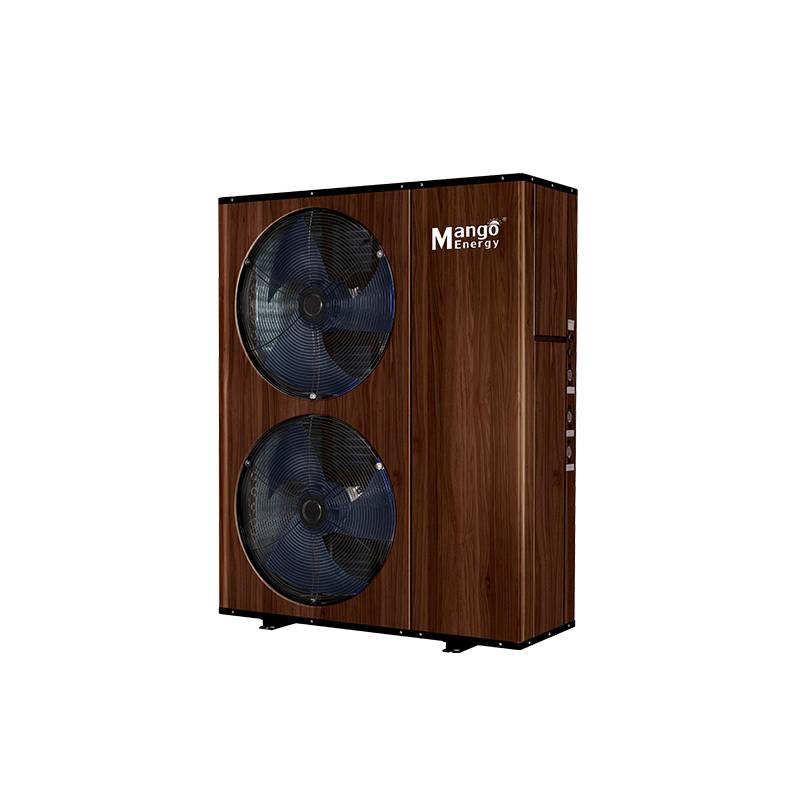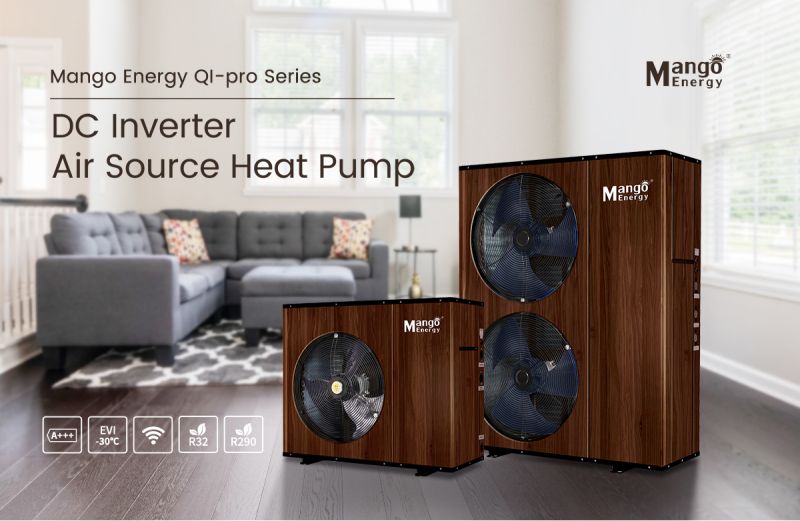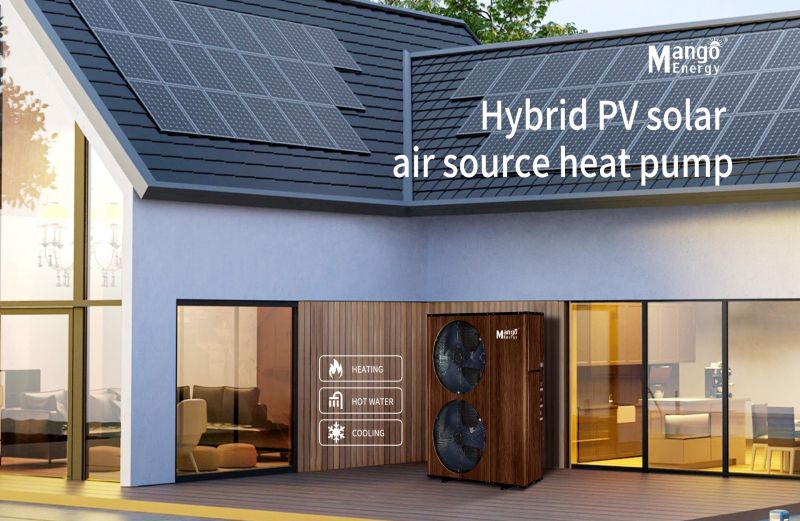
First of all, let's learn about what a heat pump is. We all know that water will flow to a lower place, and the function of a water pump is to move water from a lower place to a higher place. The same is true for heat energy. According to the second law of thermodynamics, heat can be spontaneously transferred from a high-temperature object to a low-temperature object. But it cannot be done in the opposite direction. The emergence of heat pumps has turned the impossible into reality.
The heat pump itself does not produce heat, but is a heat carrier. Based on the principle of reverse Carnot cycle, it uses a small amount of electrical energy to drive the unit, and circulates the working medium in the heat pump system in a disguised phase, absorbing and compressing low-grade heat energy and heating it for use. In a narrow sense, a heat pump refers to a device that can only work in heating mode. In a broad sense, a heat pump also includes devices such as heating and cooling air conditioners that can work in both heating and cooling modes. When heat pumps are used for heating, their performance is generally evaluated by the coefficient of operation (COP). COP refers to the ratio of the heat transferred from a low-temperature object to a high-temperature object to the required power consumption. Usually, the heat pump coefficient is 3-4 or even higher, that is, 1 unit of electricity can obtain 3-4 times the heat energy. Therefore, heat pumps are energy-saving devices that achieve efficient energy utilization.

Heat pumps are generally divided into two categories according to the heat source: natural source heat pumps and waste heat source heat pumps. Natural source heat pumps are further divided into water-source heat pumps and air-source heat pumps. Waste heat source heat pumps are divided into industrial waste heat and urban waste heat heat pumps. Let's briefly talk about the operating principle of heat pumps. Heat pump units are generally composed of compressors, condensers, evaporators, throttles and other auxiliary equipment. Absorption heat pumps use a combination of generators and absorbers to realize the compressor function. The working principle of the heat pump is the "reverse Carnot cycle": the high-temperature and high-pressure steam discharged by the compressor enters the condenser, and the refrigerant vapor releases heat to the high-temperature heat source and is condensed into a liquid refrigerant (liquefaction). The liquid working fluid is reduced in pressure and expanded by the throttling device and enters the evaporator. The vapor-liquid mixed refrigerant absorbs the heat of the low-temperature heat source (air, water, soil, waste heat, etc.) in the evaporator to evaporate and form steam (vaporization). The refrigerant vapor is sucked back into the compressor to complete a cycle, and the heat energy is prepared over and over again. In this way, the heat of the external low-temperature heat source is "pumped" to the user with a higher temperature. Heat pumps are widely used in production and life. For example, in the construction field, they can be used for heating, cooling, and making domestic hot water for buildings; in the industrial field, they can be used for the utilization of waste heat and the preparation of industrial steam; in the agricultural field, they can also be used for greenhouse heating, drying of agricultural products and other purposes.


The international market pays more and more attention to heat pump technology, and my country has also issued a number of policy documents to support and encourage the promotion and application of heat pump technology. Why do people pay so much attention to heat pumps? What role will heat pump technology play in the future global green and low-carbon transformation? Why are heat pumps so popular?
(1) Heat pumps are a key technology for decarbonizing urban heating in the future
A considerable proportion of my country's fossil energy consumption is used for heating of residents, and carbon emissions from heating are also an important component of my country's total carbon emissions. In scenarios such as decentralized heating in rural areas in the north, distributed heating in new/renovated urban areas, distributed heating in non-mandatory heating areas, and domestic hot water supply, the heat demand of buildings can be met through "heat pumps + renewable energy electricity" to achieve zero-carbon supply. At the same time, due to its energy-saving and high-efficiency characteristics, heat pumps also have advantages over other technical means in terms of heating operating costs, and have been verified by the market. In the context of energy conservation and carbon reduction in all fields of society, the promotion and application of heat pump technology will become a key technical path to promote the decarbonization of building and even urban heating.
(2) The industrial application of heat pump technology is worth looking forward to
Industry is the main energy-consuming and carbon-emitting sector in my country, and the decarbonization of industrial heat is a difficult and painful problem for the industrial sector to achieve carbon peak and carbon neutrality. At present, many heat pump manufacturers are exploring the application of heat pump technology in industry, such as using heat pumps to provide steam for industrial production, and have made good progress. Demonstration applications have been made in industries such as brewing, papermaking, and metallurgy. Although the high-grade, high-load, and high-intensity industrial heat demand cannot be solved by heat pump technology, with the development and progress of technology, heat pump technology will surely play a greater role in the industrial field in the future, which is worth looking forward to.
(3) Heat pumps meet the key direction of future energy electrification development
Under the background of dual carbon, fossil energy will decline, and renewable energy represented by green electricity will become the main energy source of my country's modern energy system and new power system. The electrification transformation of terminal energy is an inevitable trend. Heat pumps achieve heating by consuming electricity. Its popularization and promotion will help improve the level of electrification of terminal energy and the ability to absorb green electricity. If combined with energy storage and other methods, it can enhance the flexibility of the power grid and further support the decarbonization of the power system.


